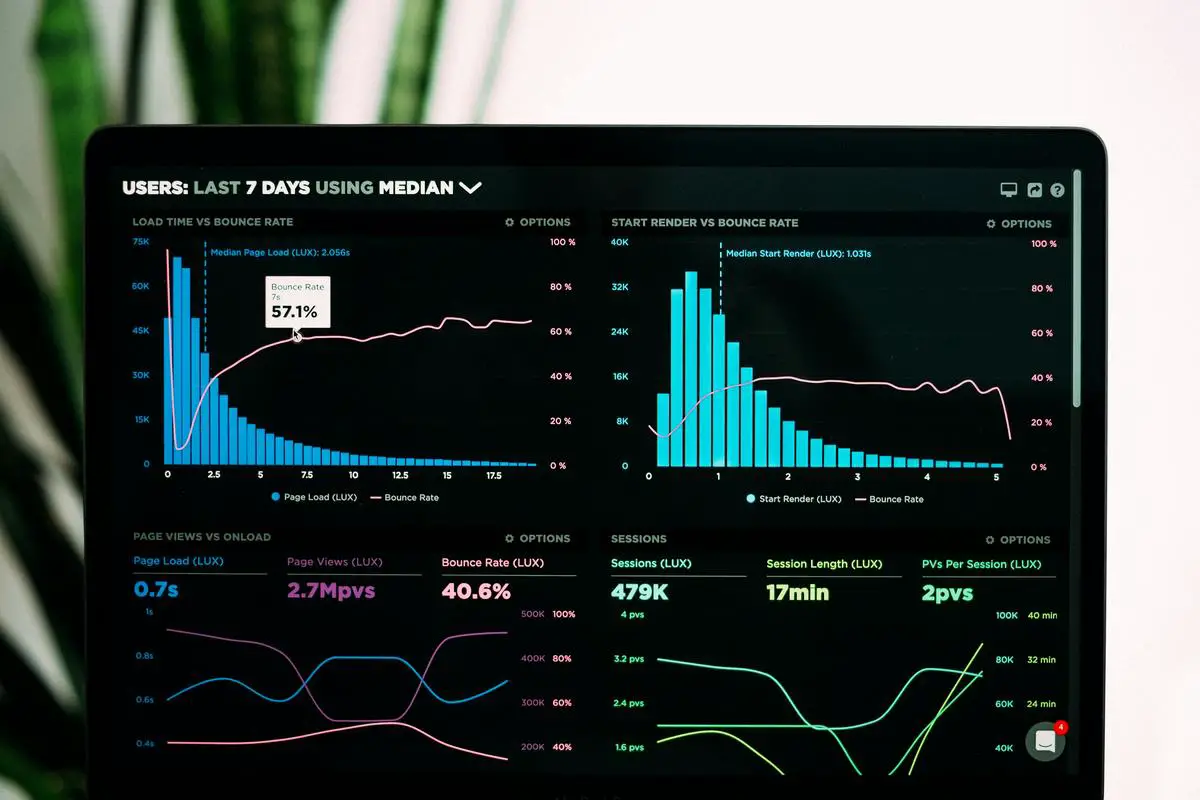Understanding Web Analytics Basics
Web analytics tools capture user interactions with websites, providing insights into visitor behavior. Common metrics include:
- Traffic
- Clicks
- Page views
- Visits
- Unique visitors
- Bounce rates
- Conversion rates
- Traffic sources
Traffic sources help refine marketing strategies. A high percentage of direct homepage visits might indicate a need for SEO focus. Social media insights can guide content creation.
Bounce rate measures single-page visits. While high rates may signal disengagement, they can also indicate user satisfaction. Pages per session and device usage offer additional context for optimizing user experiences.
Conversion rate reflects how well a site fulfills its purpose. Event tracking follows specific user actions beyond standard metrics, providing a more detailed picture of interactions.
Popular analytics tools include Google Analytics, Microsoft Clarity, and Usermaven. These solutions help optimize marketing efforts and user experiences, enabling data-driven improvements that align with business goals.
Leveraging Analytics for User Insights
Analytics provide deep understanding of visitor preferences and behaviors, essential for refining user experience (UX) and customizing content. User demographics help create detailed personas, enabling targeted content creation.
Heatmaps and session recordings visualize user interactions, highlighting engaging areas and potential barriers. This information aids in redesigning pages to enhance user flow.
Device and browser data helps optimize responsive design efforts. Behavior flow analysis reveals typical user paths and drop-off points, guiding navigation and content arrangement improvements.
Incorporating feedback mechanisms like surveys complements analytics data, adding context to quantitative insights. This combination of qualitative and quantitative data enriches understanding, leading to a more user-centered website.
Strategies for Enhancing Site Performance
Utilizing analytics data to enhance site performance involves optimizing content, improving conversion rates, and adjusting marketing campaigns.
Content optimization aligns with user expectations and engagement patterns. Regular content audits ensure relevance and appeal, enhancing user satisfaction and loyalty.
Conversion rate improvement involves analyzing funnel data to identify drop-off points and friction areas. A/B testing different elements can lead to significant improvements.
Marketing efforts can be fine-tuned using segmented data on demographics and visitor behavior. Understanding traffic sources helps optimize campaigns across various platforms.
This data-driven approach fosters continuous improvement, focusing on delivering exceptional user experiences and driving sustainable growth.

Photo by lukechesser on Unsplash
Continuous Improvement and Real-Time Tracking
Real-time tracking and continuous improvement are crucial for maintaining a competitive edge. Real-time analytics allow immediate detection and resolution of issues affecting user experience.
Dynamic adaptation to evolving user preferences ensures websites remain engaging and relevant. Proactive decision-making based on live data supports innovation and differentiation.
Comparing site performance against industry benchmarks helps evaluate strategy effectiveness. Investing in effective real-time analytics tools and fostering a culture of continuous improvement allows businesses to anticipate customer needs, mitigate risks, and drive growth.
By leveraging analytics, businesses can transform data into actionable insights, improving user experiences and driving strategic growth. Continuous adaptation and informed decision-making are key to maintaining relevance in the digital landscape.
- Pernice K. User Experience (UX) Metrics and Key Performance Indicators. Nielsen Norman Group. 2019.
- Kaushik A. Web Analytics 2.0: The Art of Online Accountability and Science of Customer Centricity. John Wiley & Sons; 2009.
- Clifton B. Advanced Web Metrics with Google Analytics. John Wiley & Sons; 2012.
